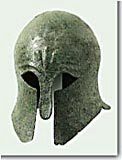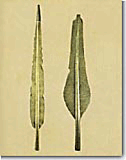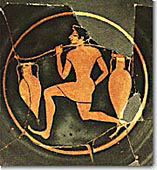

|
Among the different products that were imported in the Greek mainland, metals held an important position. They were vital for the Greek mainland, since silver, iron and copper reserves were scant. Metals were used now in larger quantities to produce works of art and jewellery, tools and weapons. The Greek tribes obtained copper from Cyprus, iron from the coasts of Pontus, gold from Thasos and various metals from Spain, Syria, Cilicia, Palestine and Mesopotamia. The region of the Black Sea in particular constituted a rich source of metals, either precious or not. Greek colonies played a significant role in the trading exploitation of these metals. |
 |
 |
The inhabitants of Phocaea, in Asia Minor, were the most daring among the Ionians in sea voyages. Since the end of the
|
The Greeks had developed trade relations with Egypt since the foundation of Naucratis, a trade station with privileges determined by the Egyptian authorities. They traded wine and olive oil in exchange for wheat, flax and papyrus.
As far as grain import from the regions of the Black Sea is concerned, although opinions in the scientific community are at variance, archaeology as well as written sources reveal that grain started to be exported towards the end of the 6th- beginning of the |
 |
So, in the end of the
|
| |
|
Note: Click on a picture for a brief description. | |